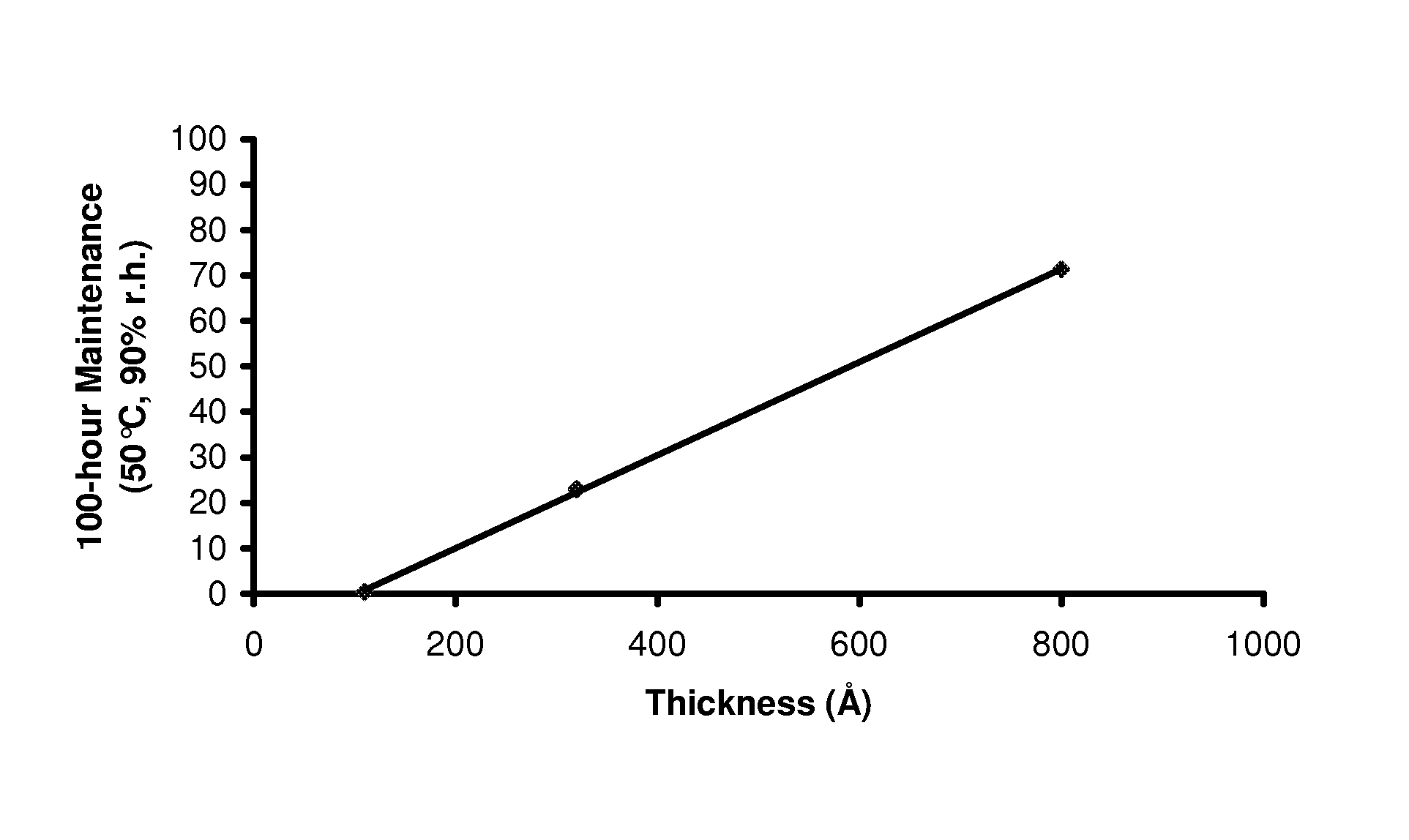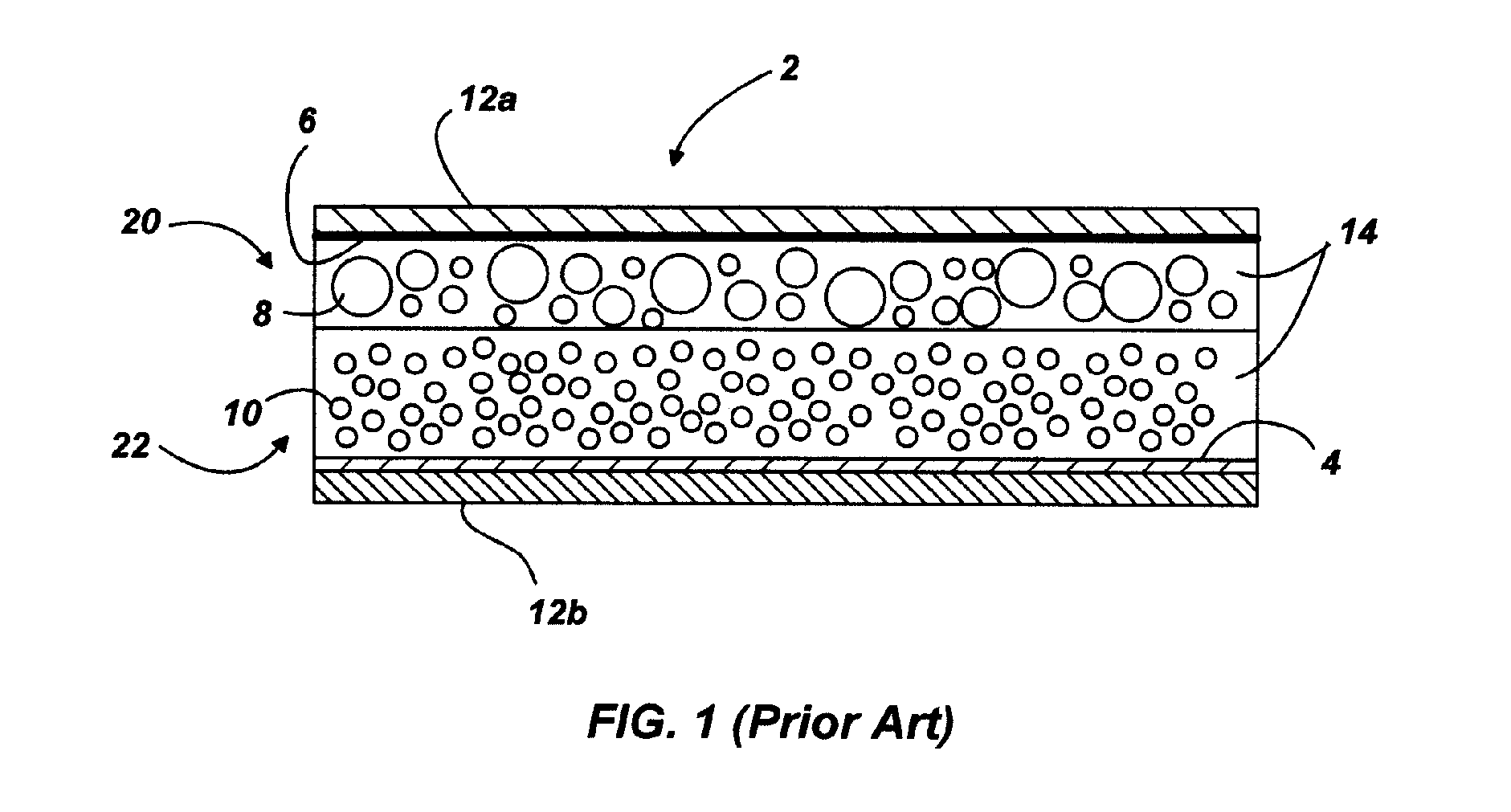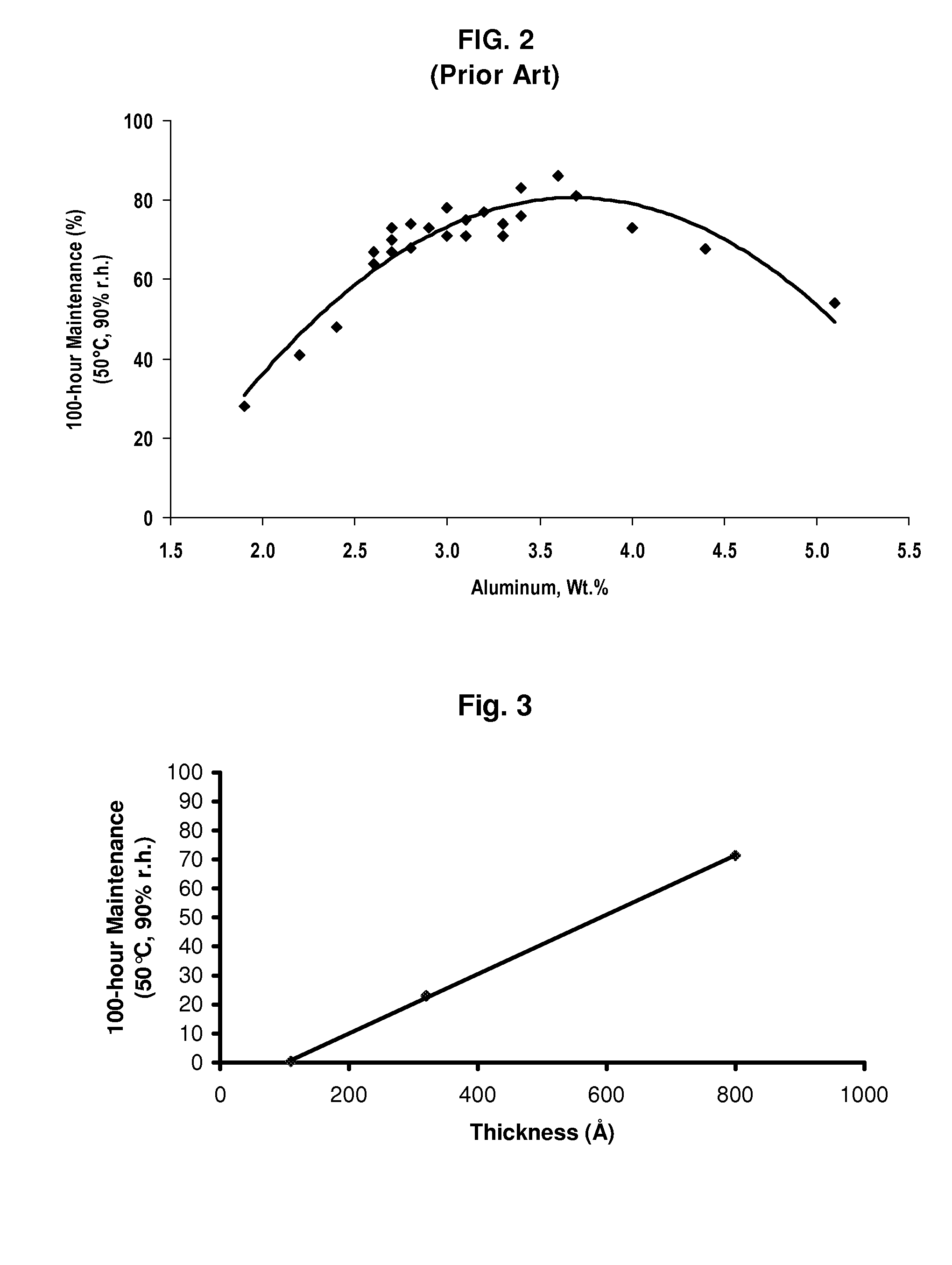Moisture-resistant electroluminescent phosphor with high initial brightness and method of making
a technology of electroluminescent phosphor and high initial brightness, which is applied in the field of electroluminescent phosphors, can solve problems such as defect-free films, and achieve the effects of reducing the number of defects, and increasing the initial brightness
- Summary
- Abstract
- Description
- Claims
- Application Information
AI Technical Summary
Problems solved by technology
Method used
Image
Examples
example 1
[0024]About 200 grams of a green-emitting ZnS:Cu electroluminescent phosphor (Type 728, OSRAM SYLVANIA Products Inc., Towanda, Pa.) was charged into a vibrated fluidized bed reactor for ALD coating. The fluidized bed reactor was a stainless steel column with a porous metal disc as the gas distributor. High-purity nitrogen was used as the fluidizing gas. The entire reactor was surrounded by a clamshell-type furnace and reactor temperature was maintained at 450K. Trimethylaluminum (TMA) and deionized water were used as precursors and the reaction split into two self-limiting half-reactions to deposit an aluminum oxyhydroxide coating. A series of pneumatically activated valves controlled the automatic and sequential dosing of precursors during the coating cycles. Both precursors were delivered via their vapor pressures and the system was evacuated and kept at low pressure of 1.0 Torr at all times. After each precursor dose, the system was flushed with nitrogen to eliminate unreacted sp...
example 2
[0025]The phosphor in this example was prepared as in Example 1, except that the number of coating cycles was increased to 300.
example 3
[0026]The phosphor in this example was prepared as in Example 1, except that the number of coating cycles was increased to 600.
[0027]A conventional CVD-coated phosphor made with the same uncoated phosphor used in Examples 1-3 was prepared as a control to compare with ALD-coated samples. The CVD coating was applied by introducing both the vaporized TMA and water vapor precursors simultaneously into a fluidized bed reactor, which was maintained at atmospheric pressure and 450K.
[0028]Thick-film electroluminescent test lamps were made containing uncoated phosphor as well as the encapsulated phosphors. The control lamps containing the uncoated phosphor were specially packaged in ACLAR, a water-impermeable, transparent film supplied by Honeywell Inc., so that the moisture sensitivity of the uncoated phosphor could be minimized. Identical lamps containing encapsulated phosphors were operated at 100 V and 400 Hz for 100 hours in two environments. In Lamp Test #1, the conditions were 21° C. ...
PUM
| Property | Measurement | Unit |
|---|---|---|
| pressure | aaaaa | aaaaa |
| temperature | aaaaa | aaaaa |
| pressure | aaaaa | aaaaa |
Abstract
Description
Claims
Application Information
 Login to View More
Login to View More - R&D
- Intellectual Property
- Life Sciences
- Materials
- Tech Scout
- Unparalleled Data Quality
- Higher Quality Content
- 60% Fewer Hallucinations
Browse by: Latest US Patents, China's latest patents, Technical Efficacy Thesaurus, Application Domain, Technology Topic, Popular Technical Reports.
© 2025 PatSnap. All rights reserved.Legal|Privacy policy|Modern Slavery Act Transparency Statement|Sitemap|About US| Contact US: help@patsnap.com



